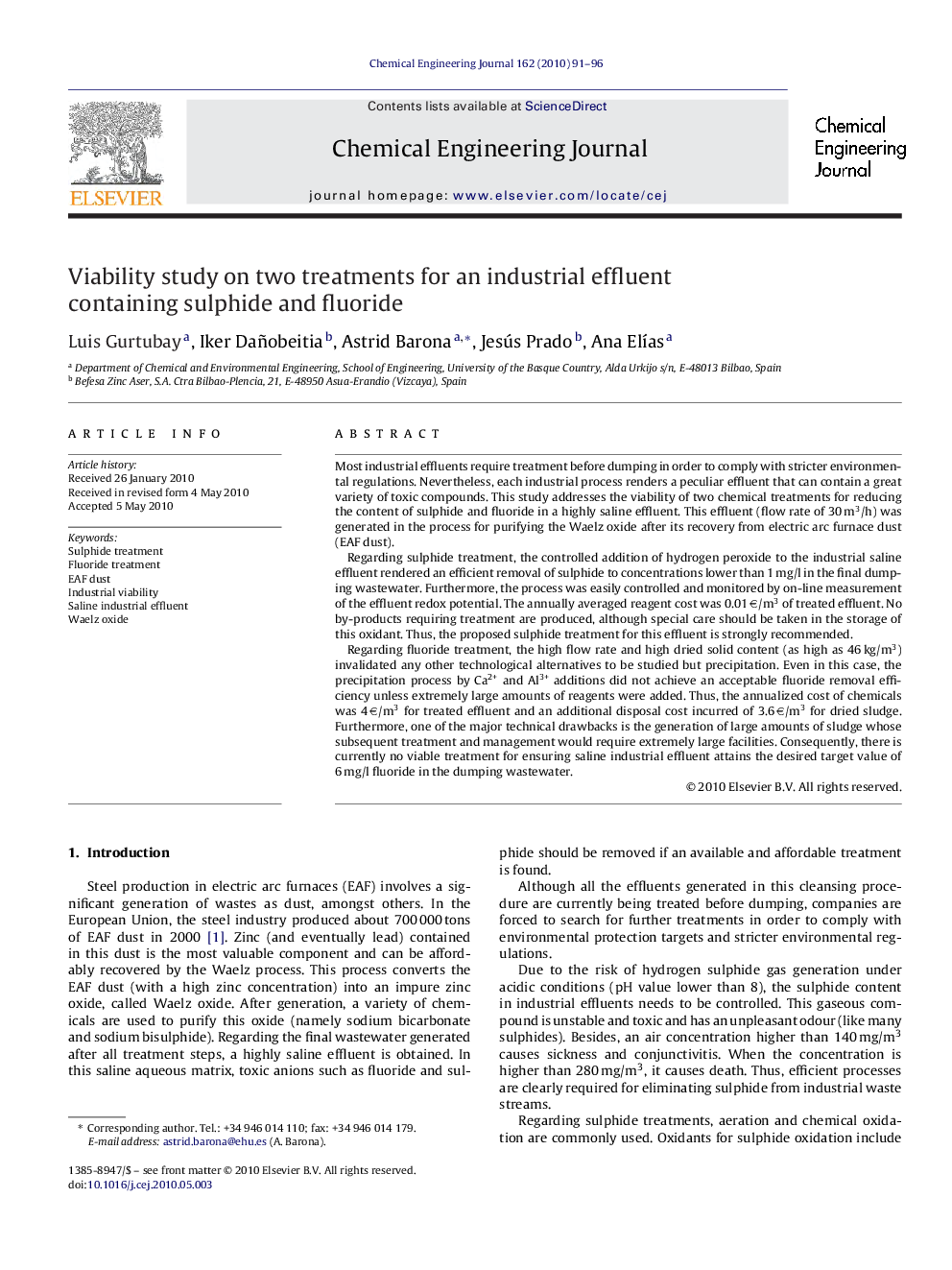| کد مقاله | کد نشریه | سال انتشار | مقاله انگلیسی | نسخه تمام متن |
|---|---|---|---|---|
| 152407 | 456495 | 2010 | 6 صفحه PDF | دانلود رایگان |

Most industrial effluents require treatment before dumping in order to comply with stricter environmental regulations. Nevertheless, each industrial process renders a peculiar effluent that can contain a great variety of toxic compounds. This study addresses the viability of two chemical treatments for reducing the content of sulphide and fluoride in a highly saline effluent. This effluent (flow rate of 30 m3/h) was generated in the process for purifying the Waelz oxide after its recovery from electric arc furnace dust (EAF dust).Regarding sulphide treatment, the controlled addition of hydrogen peroxide to the industrial saline effluent rendered an efficient removal of sulphide to concentrations lower than 1 mg/l in the final dumping wastewater. Furthermore, the process was easily controlled and monitored by on-line measurement of the effluent redox potential. The annually averaged reagent cost was 0.01 €/m3 of treated effluent. No by-products requiring treatment are produced, although special care should be taken in the storage of this oxidant. Thus, the proposed sulphide treatment for this effluent is strongly recommended.Regarding fluoride treatment, the high flow rate and high dried solid content (as high as 46 kg/m3) invalidated any other technological alternatives to be studied but precipitation. Even in this case, the precipitation process by Ca2+ and Al3+ additions did not achieve an acceptable fluoride removal efficiency unless extremely large amounts of reagents were added. Thus, the annualized cost of chemicals was 4 €/m3 for treated effluent and an additional disposal cost incurred of 3.6 €/m3 for dried sludge. Furthermore, one of the major technical drawbacks is the generation of large amounts of sludge whose subsequent treatment and management would require extremely large facilities. Consequently, there is currently no viable treatment for ensuring saline industrial effluent attains the desired target value of 6 mg/l fluoride in the dumping wastewater.
Journal: Chemical Engineering Journal - Volume 162, Issue 1, 1 August 2010, Pages 91–96